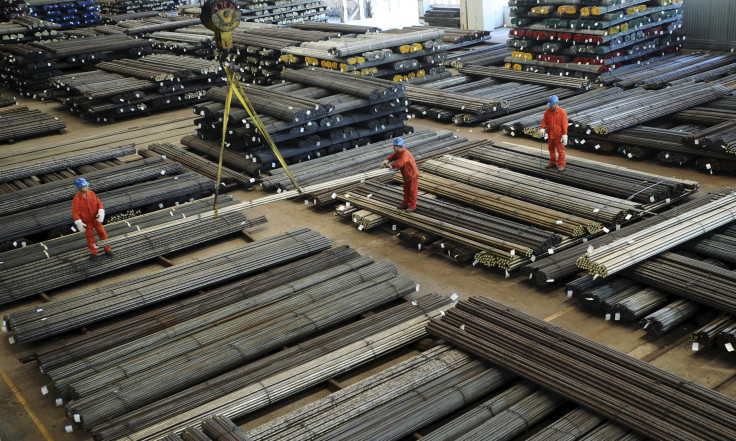China Economy: Retail Sales, Factory Output Data Show Signs Of Revival In November

China’s economic engine showed unexpected strength in November, according to a raft of official data released Saturday. The country’s industrial production and retail sales growth surpassed expectations, along with new-loans growth as interest rate cuts and higher government spending spurred consumer sentiment and demand for easy credit.
Retail sales grew at their fastest clip this year at 11.2 percent, a notch above analysts’ expectations of 11.1 percent, helped by China’s record-breaking online shopping festival known as Singles' Day in November. E-commerce giant Alibaba alone sold goods worth more than 91 billion yuan ($14.3 billion) during the Nov. 11 festival, more than 50 percent higher than the 2014 figure.
While China’s retail sector remained a bright spot during an economic slowdown this year, industrial output growth also quickened to 6.2 percent in November, China’s National Bureau of Statistics said Saturday, surprising analysts who reportedly expected a rise of 5.6 percent on an annual basis, unchanged from the prior month. The figures were boosted by robust production of automobiles, synthetic fibers and non-ferrous metals during the month.
Beijing has been pushing hard to shift to a more consumption and services-led economy and reduce its reliance on manufacturing and infrastructure to drive growth. Consumption accounted for 60 percent of the country’s gross domestic product in the first half of 2015 -- up 5.7 percent from the first six months of 2014.
"In the next five years, China's development should not just be focused on growth pace, but also growth volume, and, more importantly, growth quality," state news agency Xinhua reported, quoting Chinese President Xi Jinping in November.
However, attempts by authorities to transform the country’s growth model have met with mixed results. Earlier this week, China’s exports fell 6.8 percent in November -- their fifth consecutive monthly drop -- indicating that the government may introduce more stimulus to stay above Xi’s goal for GDP expansion of at least 6.5 percent over the next five years. Industry watchers surveyed by Bloomberg pegged China’s GDP growth rate at marginally below 6.5 percent next year and at 6.3 percent in 2017.
Meanwhile, a third gauge of economic growth -- new loans and money supply -- surpassed analysts’ forecast in November. As overall GDP growth sputtered to 6.9 percent in the last quarter -- its slowest rate in six years -- policymakers ramped up fiscal expenditure sharply since October in a bid to get bogged-down infrastructure spending back on track.
"Intensified policy support and faster project implementation towards year end could help offset partly the downward pressure," UBS Group economists, led by Zhang Ning in Hong Kong, wrote in a note quoted by Bloomberg.
© Copyright IBTimes 2024. All rights reserved.





















